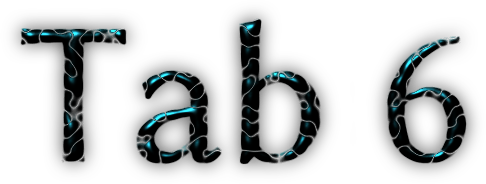search

Modes Of The Harmonic Minor Scale
Misc Scales
Text File
Harmonic Minor and its Modes
Basically the same as the natural minor scale only you raise
the seventh degree of the scale.
Although slightly unconventional, I favour diagonal, 2 octave
box shapes for illustrating and playing scales. I have shown
then starting on the 6th and 5th strings. The tabbed examples
may not match up to the box pattern but they are the same scales
I promise/hope! You may want to adopt your own fingering for
playing these scales.
"R" refers to the root note of the scale.i.e. if you wanted to
play a C harmonic minor scale you would start the shape at the
8th fret of the bottom string.
The modes of the harmonic minor scale have no common names so
I have simply referred to them as Mode (HM), HM being an acronym
for 'harmonic minor'. If you know any accepted names for these
scales then please post a comment, i.e '"Phrygian (HM)" is often
referred to as "Phrygian Dominant"'.
Just a little warning - most of these won't sound nice and are
very rarely used in music apart from Aeolian(HM) (classical
minor tonality - i.e Bach) or Phrygian(HM) (a Spanish flavour).
"R" refers to the root note of the scale. So if you wanted to
play a C harmonic minor scale you would start the shape the 8th
fret of the bottom string.
_______________________________________________________________________
Aeolian (HM)
Probably the most commonly used of all these modes, this is the
basic harmonic minor scale. Its just Aeolian mode with a sharp
seventh.
|---|---|---|---|---|---| |---|---|---|---|-0-|-R-|---|
|---|---|---|---|-0-|-R-| |---|---|---|-0-|---|-0-|-0-|
|---|---|-0-|---|-0-|-0-| |---|-0-|-R-|---|-0-|-0-|---|
|---|-0-|-R-|---|-0-|-0-| |-0-|---|-0-|-0-|---|---|---|
|-0-|---|-0-|-0-|---|---| |-R-|---|-0-|-0-|---|---|---|
|-R-|---|-0-|-0-|---|---| |---|---|---|---|---|---|---|
Example: E Aeolian (HM)
|-----------------------------0-|------------------------------11-12-|
|-----------------------0-1-4---|----------------------10-12-13------|
|-------------------0-2---------|-------------8-9-11-12--------------|
|-------------1-2-4-------------|-------7-9-10-----------------------|
|-------0-2-3-------------------|-7-9-10-----------------------------|
|-0-2-3-------------------------|------------------------------------|
E F# G A B C D# E
_______________________________________________________________________
Locrian (HM)
A (pretty much) useless scale but with a sharpened sixth. Still
pretty useless. Like in any other list of modes, it's only here
for completeness.
|---|---|---|---|---|---| |---|---|-0-|-0-|---|-R-|---|
|---|---|-0-|-0-|---|-R-| |---|---|---|-0-|-0-|---|---|
|---|---|-0-|-0-|---|---| |-0-|---|-R-|-0-|---|-0-|---|
|-0-|---|-R-|-0-|---|-0-| |-0-|-0-|---|---|-0-|---|---|
|-0-|-0-|---|---|-0-|---| |-R-|-0-|---|-0-|---|---|---|
|-R-|-0-|---|-0-|---|---| |---|---|---|---|---|---|---|
Example: E Locrian (HM)
|-----------------------------0-|------------------------------10-12-|
|-------------------------1-4---|----------------------9-11-13-------|
|-------------------0-1-3-------|-------------7-9-10-12--------------|
|-------------0-2-3-------------|-------6-8-10-----------------------|
|---------1-3-------------------|-7-8-10-----------------------------|
|-0-1-3-4-----------------------|------------------------------------|
E F G Ab Bb C D E
_______________________________________________________________________
Ionian (HM)
A major scale with a sharpened, or augmented, 5th. Try playing it
over I+,IV+ or V#+ chords (notes:I-IV-V#).
|---|---|---|---|---|---| |---|---|-0-|---|-0-|-R-|---|
|---|-0-|-0-|---|-0-|-R-| |---|---|---|-0-|---|---|-0-|
|---|-0-|-0-|---|---|---| |---|-0-|-R-|---|-0-|---|-0-|
|---|-0-|-R-|---|-0-|---| |-0-|---|---|-0-|-0-|---|---|
|-0-|---|---|-0-|-0-|---| |-R-|---|-0-|---|-0-|---|---|
|-R-|---|-0-|---|-0-|---| |---|---|---|---|---|---|---|
Example: E Ionian (HM)
|-----------------------------0-|----------------------------9-11-12-|
|-----------------------1-2-4---|----------------------10-13---------|
|-------------------1-2---------|---------------8-9-11---------------|
|-------------1-2-4-------------|-------7-10-11----------------------|
|-------0-3-4-------------------|-7-9-11-----------------------------|
|-0-2-4-------------------------|------------------------------------|
E F# G# A B# C# D# E
_______________________________________________________________________
Dorian (HM)
The Dorian scale with a sharpened fourth is sometimes referred to as
the Romanian Minor.
|---|---|---|---|---|---| |---|---|-0-|-0-|---|-R-|---|
|---|---|-0-|-0-|---|-R-| |---|---|---|---|-0-|---|-0-|
|---|---|---|-0-|---|-0-| |---|---|-R-|---|-0-|-0-|---|
|---|---|-R-|---|-0-|-0-| |---|-0-|-0-|---|-0-|-0-|---|
|---|-0-|-0-|---|-0-|-0-| |-R-|---|-0-|-0-|---|---|---|
|-R-|---|-0-|-0-|---|---| |---|---|---|---|---|---|---|
Example: E Dorian (HM)
|-----------------------------0-|----------------------------9-10-12-|
|-----------------------0-2-3---|----------------------11-12---------|
|-------------------0-3---------|---------------7-9-11---------------|
|-------------0-2-4-------------|-------8-9-11-----------------------|
|-------1-2-4-------------------|-7-9-10-----------------------------|
|-0-2-3-------------------------|------------------------------------|
E F# G A# B C# D E
_______________________________________________________________________
Phrygian (HM)
The major third brightens this typically minor-type mode.
|---|---|---|---|---|---| |---|---|---|-0-|---|-R-|---|
|---|---|-0-|-0-|---|-R-| |---|---|---|-0-|---|-0-|-0-|
|---|---|---|-0-|---|-0-| |-0-|---|-R-|-0-|---|---|-0-|
|---|---|-R-|---|-0-|-0-| |-0-|---|-0-|-0-|---|---|---|
|---|-0-|-0-|---|-0-|-0-| |-R-|-0-|---|---|-0-|---|---|
|-R-|---|-0-|-0-|---|---| |---|---|---|---|---|---|---|
Example: E Phrygian (HM)
|-----------------------------0-|------------------------------10-12-|
|-----------------------0-1-3---|----------------------10-12-13------|
|-------------------1-2---------|-------------7-9-10-13--------------|
|-------------0-2-3-------------|-----6-7-9-10-----------------------|
|-------0-2-3-------------------|-7-8--------------------------------|
|-0-1-4-------------------------|------------------------------------|
E F G# A B C D E
_______________________________________________________________________
Lydian (HM)
First interval is a minor third, turning this usually major-type mode
right on it'd head.
|---|---|---|---|---|---| |---|---|-0-|---|-0-|-R-|
|---|---|-0-|---|-0-|-R-| |---|---|-0-|---|-0-|-0-|
|---|-0-|---|-0-|-0-|---| |---|-0-|-R-|---|---|-0-|
|---|-0-|-R-|---|---|-0-| |---|-0-|-0-|---|-0-|---|
|---|-0-|-0-|---|-0-|---| |-R-|---|---|-0-|-0-|---|
|-R-|---|---|-0-|-0-|---| |---|---|---|---|---|---|
Example: Fb Lydian (HM)
|-----------------------------0-|----------------------------9-11-12-|
|-----------------------0-2-4---|---------------------9-11-12--------|
|-----------------0-1-3---------|---------------8-9-12---------------|
|-------------1-2---------------|---------8-9-11---------------------|
|-------1-2-4-------------------|-7-10-11----------------------------|
|-0-3-4-------------------------|------------------------------------|
Fb G Ab Bb Cb Db Eb Fb
_______________________________________________________________________
Mixolydian (HM)
Very unusual sound since the root note of the scale has been
sharpened.
|---|---|---|---|---|---|---| |---|---|-0-|-0-|---|-R-|---|
|---|---|---|---|---|-R-|---| |---|---|---|---|-0-|---|-0-|
|---|---|---|-0-|---|-0-|-0-| |---|---|-R-|-0-|---|-0-|-0-|
|---|---|-R-|-0-|---|-0-|-0-| |---|-0-|---|-0-|-0-|---|---|
|---|-0-|---|-0-|-0-|---|---| |-R-|-0-|---|-0-|-0-|---|---|
|-R-|-0-|---|-0-|-0-|---|---| |---|---|---|---|---|---|---|
Example: E# Mixolydian (HM)
|-----------------------------1-|----------------------------9-10-13-|
|-----------------------0-2-3---|--------------------9-10-12---------|
|-------------------1-2---------|-------------7-10-11----------------|
|-------------0-3-4-------------|-------7-9-11-----------------------|
|-------0-2-4-------------------|-8-9-11-----------------------------|
|-1-2-4-------------------------|------------------------------------|
E# F# G# A B C# D E#
_______________________________________________________________________
Well, there's a lot there, and chances are you'll only ever use
two or three of them since they are typically a little too angular
to sound nice to our ears.
Regardless, I hope that this is useful for study or if you've
reached a dead end in your playing and want to try a different
approach, or simply if you want to sound like a smart-arse at your
local jam nights.
Thanks a lot, MikeOfTheChimps.
![chord popup]()

